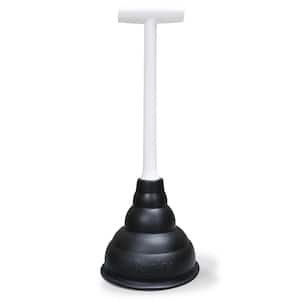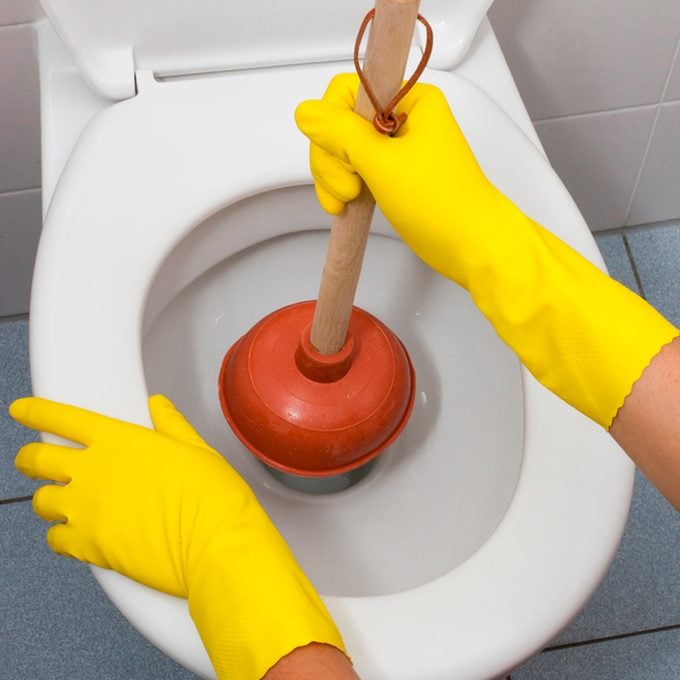Tips to Properly Apply Plunger and Drain Cleaners: Professional Guidance
Tips to Properly Apply Plunger and Drain Cleaners: Professional Guidance
Blog Article
Do you find yourself trying to locate information on How To Use Your Toilet Plunger Correctly in 5 Easy Steps?

Intro
Appropriate upkeep of family drains is necessary for preventing clogs and making sure smooth water flow. Among the secret tools in every homeowner's toolkit is the bettor, alongside various drain cleansers made to take on persistent obstructions properly. This article discovers just how to use bettors and drain cleaners efficiently to keep your drains moving openly.
Area 1: Comprehending Plungers
Kinds of Plungers
There are numerous sorts of plungers available, each made for various kinds of drains and blocks. One of the most typical kinds consist of cup plungers, flange plungers, and accordion plungers.
How Plungers Job
Plungers work on the concept of developing pressure and suction to dislodge obstructions. When effectively used over a drainpipe, they produce a vacuum that can take out particles or separate obstructions.
Picking the Right Plunger
Choosing the appropriate plunger depends upon the kind of drain and the nature of the clog. Mug bettors are excellent for sinks and bathtubs, while flange plungers are better matched for toilets as a result of their layout.
Typical Mistakes with Plungers
Avoiding these mistakes guarantees effective plunging: inappropriate seal around the drainpipe, inadequate pressure, and unclear surrounding debris.
Area 2: Making Use Of Plungers Efficiently
Prep work
Before diving, guarantee the bettor covers the drainpipe entirely and develops a limited seal. Clear any visible particles around the drainpipe opening.
Strategy
Begin with gentle diving motions to develop suction. Increase pressure progressively, using a constant rhythm. Repeat as required up until the drainpipe clears.
Repairing Tips
If diving doesn't work, attempt adjusting the seal, applying oil jelly for a better seal, or making use of a various sort of bettor.
Section 3: Recognizing Drainpipe Cleaning Company
Sorts Of Drainpipe Cleansers
Drain pipes cleansers can be chemical or enzymatic. Chemical cleaners utilize strong chemicals to dissolve clogs, while chemical cleaners use natural enzymes to break down organic matter.
How Drain Cleaning Company Job
Chemical cleansers respond with clogs to dissolve them, while enzymatic cleansers break down natural materials like hair and grease without harming pipes.
Safety and security Factors to consider
Constantly put on handwear covers and eye defense when utilizing chemical drainpipe cleaners. Make sure adequate air flow and comply with supplier instructions very carefully.
Eco-Friendly Alternatives
Take into consideration using vinegar and cooking soda or enzyme-based cleansers for environmentally friendly alternatives that are much safer for pipelines and the atmosphere.
Section 4: Using Drain Cleaning Company Effectively
Application Methods
Pour chemical cleansers straight right into the drainpipe opening. Enable them to help the suggested time before flushing with warm water. Chemical cleaners must sit over night.
Precautions
Avoid blending various sorts of cleaners, as this can produce hazardous fumes. Never utilize chemical cleaners together with a bettor, as splashing can take place.
Handling Stubborn Blockages
For relentless blockages, consider making use of a plumbing snake or calling an expert plumbing to stop damages to pipelines.
Conclusion
In conclusion, understanding how to use bettors and drain cleansers successfully is vital for preserving healthy pipes systems. By selecting the right tools and strategies, home owners can deal with minor clogs and protect against major plumbing issues down the line.
How To Properly Use A Plumbing Snake To Clear Drains
When any drain clogs in our home arise, we tend to gravitate toward the plunger and little else. In cases where the plunger and its vacuum-created pressure are not able to clear clogs, many immediately move to harmful chemicals or simply call their plumber to fix the issue.
we’re happy to help with all drain cleaning needs and concerns. This includes informing you on a few other home remedies you may have at your disposal for minor to moderate clogs, one of which is the use of a plumbing snake. Many people have never used one of these before – let’s go over the steps to take when your drain clogs and you have a plumbing snake available.
Attempt Plunger Use
The first step here, as we noted above, should indeed be to grab your plunger when you notice a drain clog and attempt to resolve it this way. If you’re unsure how to use a particular type of plunger, our plumbers can answer any questions you have. If this doesn’t do the trick, however, you move on to the snake.
Locate And Prepare Snake
A plumbing snake is a metal or plastic device that’s generally about a quarter of an inch thick. It’s design with significant extensions, meant to reach down into your clogged drain and push the clog out. Snakes also contain drain augers that will latch onto and push stubborn blockages.
If your plunger doesn’t clear a clog, locate your snake and bring it to the drain in question. We also recommend keeping a bucket nearby to collect the clog once you pull it out, plus we’d advise wearing goggles and possibly protective gloves.
Feed Snake
Once you’re ready to go, feed the snake slowly down the drain, using the crank device it comes with to keep it moving until it finds the clog. Once this happens, much of the clog will be latched onto the coil so you can pull it out, while the rest will simply break up and flow downward.
Detach Debris
Remove the snake slowly from the drain, and once you’ve done so, pick off any debris that’s stuck to the coil. This is another area where wearing gloves is a must.
Flush Drain
Finally, take a few minutes to ensure the snake has done its job correctly. If you’ve been using it on a toilet, flush the toilet a couple times and make sure everything flows well. If you’ve used it on a different drain, flush it with some room temperature water.
https://www.mybuddytheplumber.com/blog/how-to-properly-use-a-plumbing-snake-to-clear-drains/

Application Methods
Pour chemical cleansers straight right into the drainpipe opening. Enable them to help the suggested time before flushing with warm water. Chemical cleaners must sit over night.
Precautions
Avoid blending various sorts of cleaners, as this can produce hazardous fumes. Never utilize chemical cleaners together with a bettor, as splashing can take place.
Handling Stubborn Blockages
For relentless blockages, consider making use of a plumbing snake or calling an expert plumbing to stop damages to pipelines.
Conclusion
In conclusion, understanding how to use bettors and drain cleansers successfully is vital for preserving healthy pipes systems. By selecting the right tools and strategies, home owners can deal with minor clogs and protect against major plumbing issues down the line.
How To Properly Use A Plumbing Snake To Clear Drains
When any drain clogs in our home arise, we tend to gravitate toward the plunger and little else. In cases where the plunger and its vacuum-created pressure are not able to clear clogs, many immediately move to harmful chemicals or simply call their plumber to fix the issue.
we’re happy to help with all drain cleaning needs and concerns. This includes informing you on a few other home remedies you may have at your disposal for minor to moderate clogs, one of which is the use of a plumbing snake. Many people have never used one of these before – let’s go over the steps to take when your drain clogs and you have a plumbing snake available.
Attempt Plunger Use
The first step here, as we noted above, should indeed be to grab your plunger when you notice a drain clog and attempt to resolve it this way. If you’re unsure how to use a particular type of plunger, our plumbers can answer any questions you have. If this doesn’t do the trick, however, you move on to the snake.
Locate And Prepare Snake
A plumbing snake is a metal or plastic device that’s generally about a quarter of an inch thick. It’s design with significant extensions, meant to reach down into your clogged drain and push the clog out. Snakes also contain drain augers that will latch onto and push stubborn blockages.
If your plunger doesn’t clear a clog, locate your snake and bring it to the drain in question. We also recommend keeping a bucket nearby to collect the clog once you pull it out, plus we’d advise wearing goggles and possibly protective gloves.
Feed Snake
Once you’re ready to go, feed the snake slowly down the drain, using the crank device it comes with to keep it moving until it finds the clog. Once this happens, much of the clog will be latched onto the coil so you can pull it out, while the rest will simply break up and flow downward.
Detach Debris
Remove the snake slowly from the drain, and once you’ve done so, pick off any debris that’s stuck to the coil. This is another area where wearing gloves is a must.
Flush Drain
Finally, take a few minutes to ensure the snake has done its job correctly. If you’ve been using it on a toilet, flush the toilet a couple times and make sure everything flows well. If you’ve used it on a different drain, flush it with some room temperature water.
https://www.mybuddytheplumber.com/blog/how-to-properly-use-a-plumbing-snake-to-clear-drains/

I discovered that write up on while doing a search on the web. Sharing is caring. You just don't know, you may just be doing someone a favor. We thank you for reading our article about .
Schedule Now! Report this page